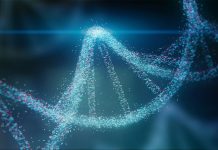
In a new study, researchers found that spontaneous fluctuations in pupil dilation or heart rate could enable much earlier diagnosis of autism-like behaviors.
The research was conducted by a team from Boston Children’s Hospital.
Autism and other neurodevelopmental disorders often aren’t diagnosed until a child is a few years of age.
But at that time, behavioral interventions and speech therapy become less effective.
Previous research has shown that in autism, the brain parts controlling arousal are especially affected. Altered arousal affects both spontaneous pupil dilation/constriction and heart rate.
In the study, the team used a machine-learning algorithm (a type of AI) that can spot abnormalities in pupil dilation in autism in mice.
It further shows that the algorithm can accurately detect if a girl has Rett syndrome, a genetic disorder that impairs cognitive, sensory, motor, and autonomic function starting at 6 to 18 months of age, as well as autism-like behaviors.
The team hopes this new method could provide an early warning signal not just for Rett syndrome but for autism in general.
In the future, they believe it could also be used to monitor patients’ responses to treatments.
They believe the new finding could offer robust yet affordable screening tools for infants and toddlers.
Currently, a clinical trial is testing the drug ketamine for Rett syndrome, and a gene therapy trial is planned.
The leaders of the study are neuroscientist Michela Fagiolini, Ph.D., and postdoctoral fellow Pietro Artoni, Ph.D.
The study is published in PNAS.
Copyright © 2019 Knowridge Science Report. All rights reserved.



